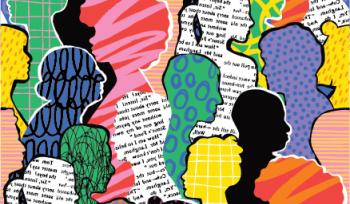Bridging geographical divides is a familiar hurdle for global and dispersed teams. However, an equally pressing yet often less addressed challenge lies in navigating the complex maze of intergenerational communication. As Baby Boomers, Gen X, Millennials, and Gen Z professionals converge in the workplace, their distinct communication styles, preferences, and expectations introduce a unique set of obstacles.
This article explores the heart of these communication challenges, proposing strategies and insights to enhance intergenerational communication. By acknowledging and addressing these differences head-on, organizations can unlock the full potential of their teams, fostering a culture of inclusivity, understanding, and productivity.
Communication Differences Between Generations
Understanding the communication style unique to each generation can be essential to fostering collaboration within teams. As highlighted in a recent Forbes article, each generation has its own communication style, influenced by the world around them as they grow up (1).
- Baby Boomers, born between 1946 and 1964, were influenced by radio, black and white TV, and conversations around the dinner table. They tend to favor auditory interactions, such as in-person meetings or phone calls, where the nuances of voice and a personal connection can convey sincerity and commitment.
- Generation X, those born between 1965 and 1980, were influenced by color TV, magazines, and (to some extent) early video games. They show a preference for visual communication and learning and appreciate clear, concise presentations and documents that allow them to grasp how things work quickly, reflecting their pragmatic approach to problem-solving.
- Millennials, born between 1981 and 1996, grew up in a more digitally connected world, which is reflected in their communication preferences. They often prefer text and instant messaging for their convenience and ability to facilitate quick, collaborative exchanges.
- Generation Z, born 1997 and 2012, having been immersed in digital technology from a young age, tends to favor the fastest communication methods available. This often translates to brief, direct messages or digital platforms that support quick, relevant bursts of thought.
It's vital to recognize that these generational characteristics serve as a general guide rather than a strict classification. Individual preferences can vary widely within any generational cohort, influenced by personal experiences, professional backgrounds, and cultural factors. Acknowledging these variances is key to avoiding stereotypes and ensuring effective communication. Additionally, as individuals progress through different stages of their careers and lives, their communication preferences may evolve, underscoring the importance of flexibility and adaptability in our approach to intergenerational communication within the workplace.
Work Style, Desires, and Needs Differences Between Generations
Each of us has unique expectations of our work and workplace, responding differently to similar conditions. Knowing what we personally prefer is important to a satisfying work experience; however, understanding the variety of work styles, desires, and needs of others can significantly enhance how we interact and collaborate.
- Baby Boomers: As mentioned earlier, Baby Boomers place a high value on hard work and loyalty, not just in terms of their commitment to the organization but also in expecting the organization to reciprocate. They appreciate recognition for their contributions and a work environment that respects their experience and knowledge. This generation often seeks stability and consistency in their roles, with a preference for clear hierarchies and defined paths of progression.
- Generation X: Gen X values independence and autonomy, preferring a hands-off management style that trusts them to complete tasks without constant oversight. They are highly adaptable, resourceful, and value efficiency, often seeking flexible work arrangements that allow them to balance their professional and personal lives effectively.
- Millennials: Having entered the workforce with a different set of expectations, Millennials strongly emphasize coaching and feedback. They thrive in environments that offer continuous learning opportunities and regular guidance, viewing their careers as a journey of growth and development. This generation seeks purpose in their work, wanting to contribute to something larger than themselves.
- Generation Z: The newest entrants into the workforce look for clear direction and opportunities for advancement. They are pragmatic and realistic, desiring stability in their roles but expecting to be challenged and develop new skills. Gen Z values transparency and honesty from their leaders and is particularly keen on using technology to solve problems and streamline processes.
Tips for Effective Cross-Generational Communications
Communicating effectively across generations in the workplace requires a blend of awareness, flexibility, and mutual respect. Here are some practical tips to enhance intergenerational communication:
- Know Your Audience: Familiarize yourself with the general communication preferences of different generations, but avoid operating under any assumptions or generalities whenever possible. Instead, engage in conversations with your colleagues to understand their individual preferences. This approach shows respect and helps tailor your communication strategy to meet everyone's needs.
- Not Working? Try Something Else: If your initial method of communication isn't resonating with someone, be willing to adjust your approach. For example, if a colleague is not answering your emails, consider sending a brief instant message or suggesting a quick video call instead.
- Stretch Yourself: Embrace compromise and adaptation. If you're used to formal reports but your Millennial team members prefer concise presentations, try to meet in the middle. This might mean adding visual elements to your reports or summarizing key points in a slide deck. The willingness to stretch beyond your comfort zone can lead to more effective collaboration.
- Set Mutual Expectations: Early in your collaboration, have an open discussion about communication preferences, including response times, availability, and preferred channels. Setting these mutual expectations helps avoid misunderstandings and ensures everyone is on the same page regarding how and when to communicate.
Working with Global Intergenerational Teams
Working with global, intergenerational teams presents a unique set of challenges and opportunities. The blend of cultural, temporal, and linguistic differences, alongside the varied communication styles and expectations of different generations, requires a nuanced approach to team management and collaboration. Here’s how to navigate these complexities:
Typical Challenges of a Global Workforce
- Cultural Differences: Understanding and respecting the vast array of cultural norms and practices can be daunting but is essential for harmony and productivity.
- Time Differences: Coordinating across multiple time zones demands flexibility and creativity in scheduling meetings and deadlines.
- Language Barriers: Even when a common language is shared, nuances and colloquialisms can lead to misunderstandings.
Managing Age/Communication Differences
- Educate Your Team: Regularly share insights about the diverse needs and preferences of different generations, as outlined above. Knowledge is the first step towards understanding.
- Foster a Culture of Respect: The key to collaborating with other generations is to understand, accept, and respect that they are different from your generation. (1) Cultivate an environment where every team member feels valued and can learn from one another, regardless of age or background.
- Consider the Unwritten Psychological Contract: Be mindful of the expectations team members have about their roles, responsibilities, and the support they receive, which can vary significantly across cultures and generations.
- Provide Flexible Solutions: Offer a variety of communication channels to accommodate different preferences, from email and instant messaging to video calls and face-to-face meetings (when possible).
- Seek Feedback: Regularly ask team members what communication methods and management approaches are working. This can help identify issues before they become problematic.
- Adapt to Changing Needs: Be prepared to adjust strategies as the team evolves. Your team's needs and preferences can change over time, requiring ongoing flexibility and adaptation.
Embracing generational diversity transcends mere inclusion—it may just be the key to innovation and unity. After all, each generation offers a wealth of knowledge and perspectives that can unlock new opportunities for collective growth and learning. A commitment to cross-generational communication and respect is not just a strategy for success; it's a journey toward building a more dynamic, resilient, and interconnected world. Here, every voice contributes to progress, inspiring us to look beyond our differences and discover the incredible potential that lies in our collective wisdom.
References
- 7 tips for managing a multigenerational workforce, 2023, Culture Amp
- Navigating Intergenerational Communication, 2022, Forbes
- Are You Ready for Gen Z in the Workplace? 2019, California Management Review
- Insight Into Millennials in the Workplace, Insights, Berkeley ExecEd
- What you need to know about Gen Z: Initiative, Holly Schroth
Dive Deeper
Take a deep-dive into this topic and gain expert, working knowledge by joining us for the programs that inspired it!
Women's Executive Leadership Program
Understand women's perspectives and strengths in business to improve your problem-solving skills, negotiation tactics, and leadership.
Learn more


